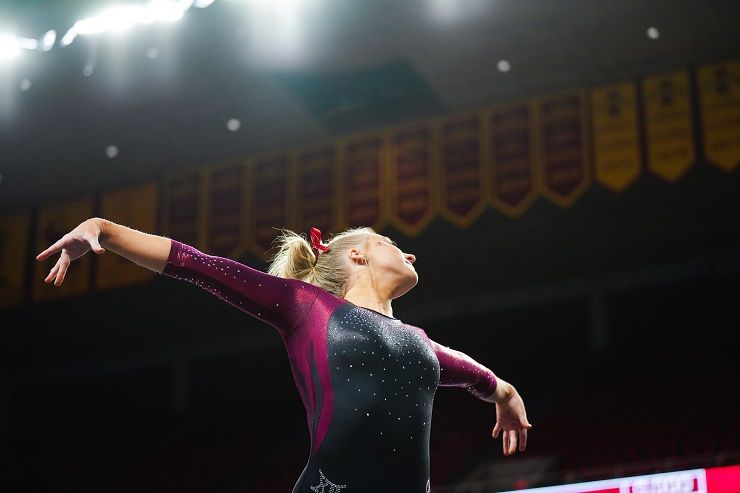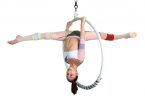Setting goals is a fundamental aspect of athletic development and plays a crucial role in improving performance. Whether you’re an aspiring athlete or a seasoned competitor, having well-defined goals can provide direction, motivation, and a roadmap to success. In this article, we will explore the importance of setting goals for enhancing athletic performance and provide you with valuable insights and strategies to set and achieve your goals effectively.
Setting goals is a very constructive but also difficult procedure for athletes and dancers, regardless of age, sport and level. Over the past three decades, sports psychologists have dealt too much with the way and the effects of setting targets in improving performance.
At a rate of over 90%, all the investigations converge on the fact that setting goals to affect performance and helps both in stress management and increasing self-confidence and motivation.
The term objective is an aim or practice which must be achieved at a specific time. The objectives can be focused on training or competition, to be short-term or long-term, to be realistic and effective e.g. to win a match or contest and performance objectives e.g. to focus on improving one’s personal capacity and to improve as an athlete/dancer.
It is clear that expressions such as “going strong” or “play/run/fight/dance as if there’s no tomorrow” as well as fragmented targets which don’t have programming, structure, purpose and duration are not apparently objective and have no useful effect on the performance of the athlete/dancer.
The researchers argue that the objective focuses on the trainee’s attention to specific and important aspects of the work which needs to be done e.g. improvement of the flow in a choreography. Moreover, they offer extra help to the trainee to increase his efforts both on a daily basis and also in the long term. Finally, it has been proven that by setting targets, trainees develop new strategies and insights concerning the sport.
In accordance with the socio-cognitive theory, daily achievable, realistic and eventually effective targets lead to the decrease of anxiety, increased effort and the boost of self-esteem, more personal satisfaction, higher levels of attention and effort, and ultimately the achievement of a better performance.
In order for this tactic to have positive changes in our performance it is very important to follow the principles and norms mentioned below:
1. Set specific measurable objectives
When setting goals to improve performance, it’s crucial to be specific and measurable. Vague and non-measurable objectives can lead to doubt and a loss of interest in the sport. To keep athletes motivated and engaged, it’s important to establish clear objectives that can be tracked and provide feedback on their progress..
2. Set realistic and achievable goals
Finding the right balance is key when setting goals. It’s important to neither exaggerate expectations nor set them too low. Unrealistic goals can lead to frustration and disappointment, while easily attainable goals may not provide the necessary challenge for growth. By setting realistic and achievable goals, athletes can maintain a sense of motivation and drive.
3. Set both long-term and short-term objectives
Goals should encompass both long-term and short-term objectives. Breaking down larger goals into smaller, manageable milestones allows for better progress tracking and adjustment along the way. Daily, weekly, monthly, and yearly targets provide a roadmap for success and allow for adjustments and reevaluation if needed.
4. Set both performance and competition objectives
Goals should address both personal improvement and competition outcomes. While personal improvement is essential, competition objectives can help athletes gauge their progress and performance relative to others. These two types of goals often go hand in hand, motivating athletes to push their limits and achieve their best results.
5. Set positive and not negative goals
Focusing on the positive aspects of performance is essential for goal setting. Instead of fixating on what athletes are doing wrong, it’s more productive to concentrate on what they should be doing right. By setting positive goals, athletes can maintain a growth mindset and cultivate a sense of achievement and progress.
6. Set dates
Assigning specific dates to goals provides a sense of structure and accountability. Recording goals with target dates helps athletes stay organized and fully control their achievements. It adds a level of commitment and urgency, ensuring that progress is made within a designated timeframe.
7. Identify the strategies that led you to attain your goals.
Reflecting on past successes can be a valuable learning experience. By identifying the strategies and approaches that contributed to achieving goals in the past, athletes can develop a protocol for future endeavours. Understanding what worked well in the past can inform future goal-setting strategies and increase the likelihood of success.
8. Commit to your goals, reset and reassess them.
Setting goals is just the first step; it’s equally important to commit to them. Even when faced with challenges and setbacks, athletes should stay focused on their goals and give their best effort. If goals become unattainable or need adjustment, it’s essential to reset and reassess. Flexibility and adaptability are key to staying on track and ultimately achieving desired outcomes.
By setting goals for improving performance, athletes can take their abilities to new heights and achieve remarkable results. Remember, goal-setting is not just about the destination but also the journey. Embrace the process, stay committed, and adapt your goals as you progress. With a clear vision and actionable steps, you can transform your athletic potential into tangible achievements. Take charge of your performance by setting goals that inspire, challenge, and fuel your passion for excellence.
References: Kingston, K., & Hardy, L. (1997). Effects of different types of goals on processes that support performance. The Sport Psychologist, 11, 277 – 293. Kingston, K., & Wilson, K. (2009). The application of goal setting in sport. In S. Mellalieu, & S. Hanton (Eds.), Advances in applied sport psychology: A review (pp. 75e123). Abingdon, UK: Routledge. Mullen, R., & Hardy, L. (2010). Conscious processing and the process goal paradox. Journal of Sport & Exercise Psychology, 32, 275 – 297.








